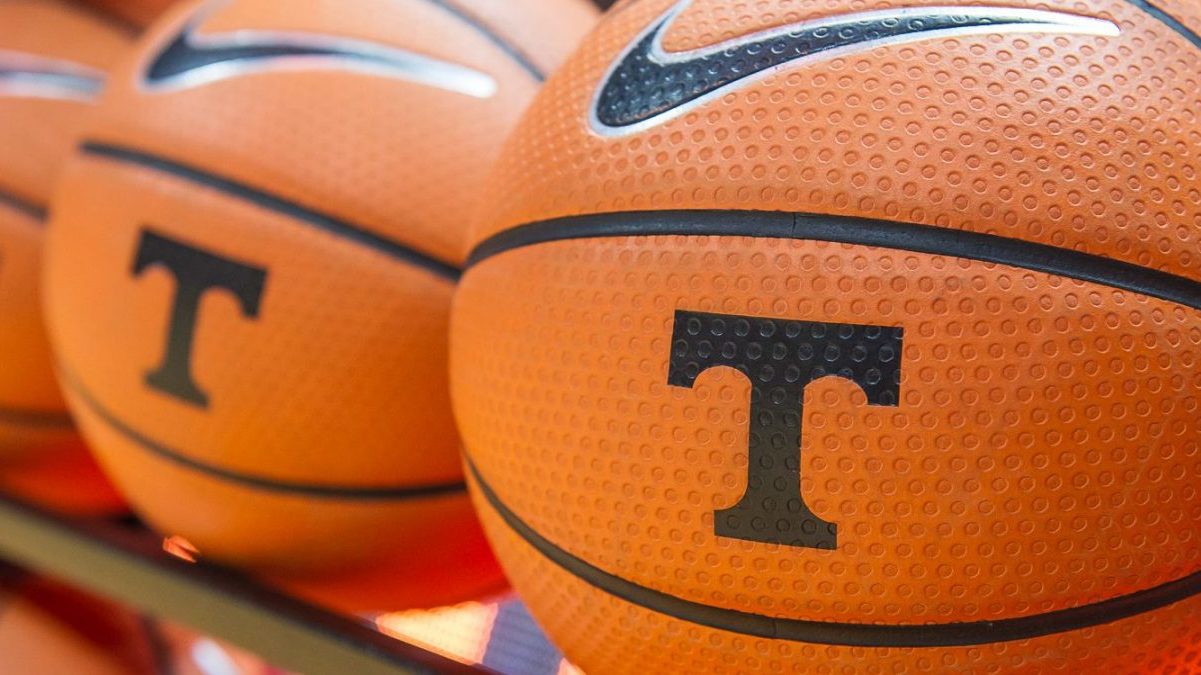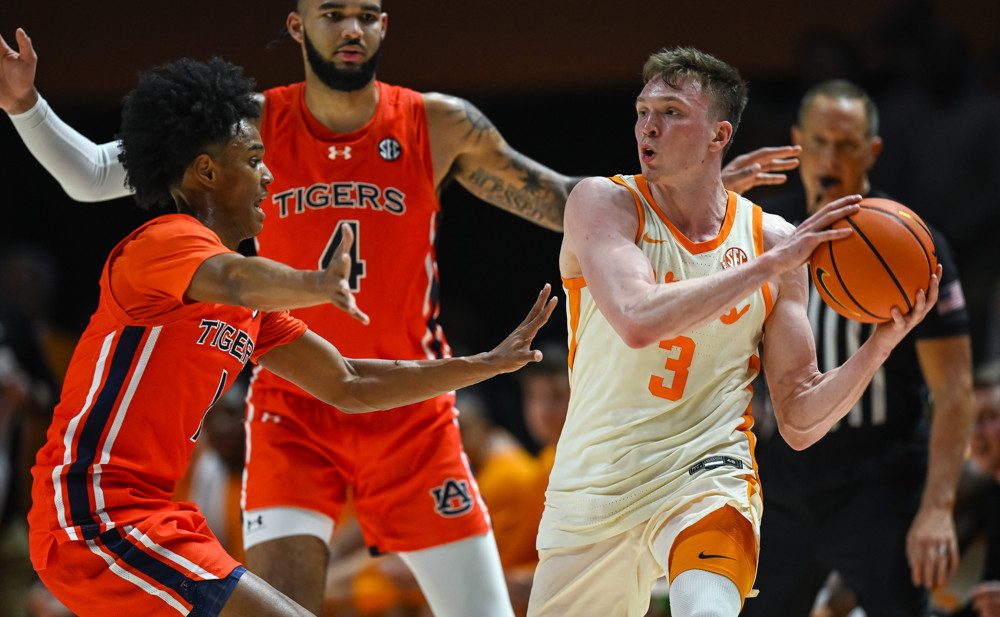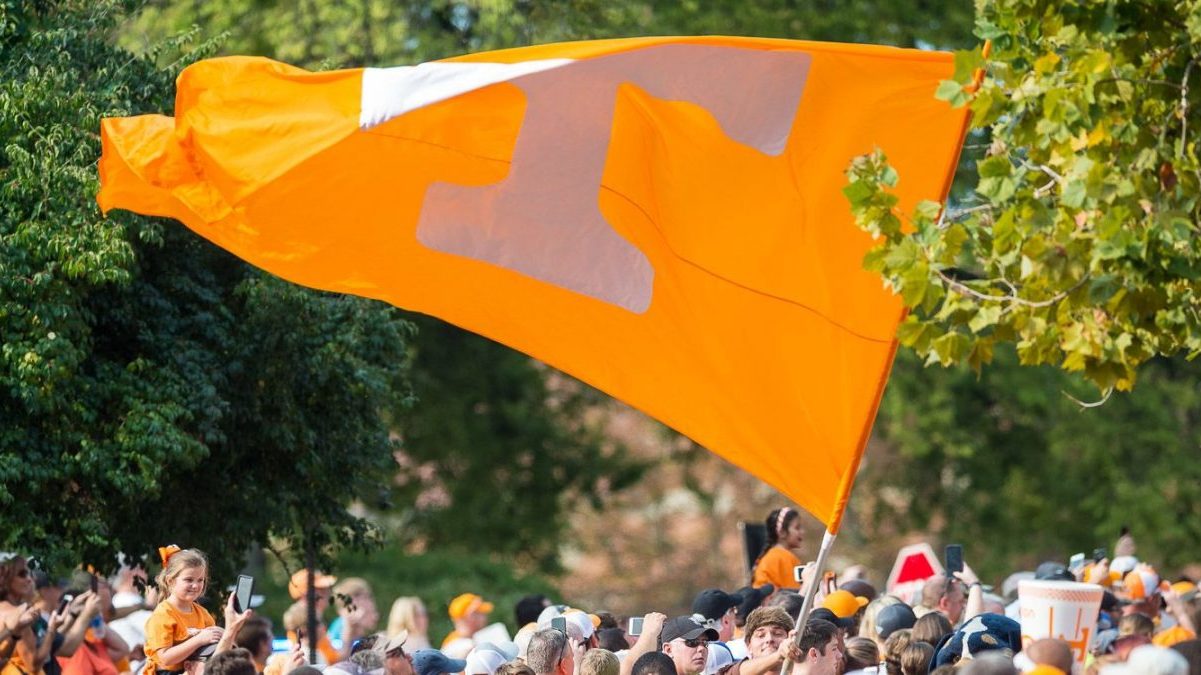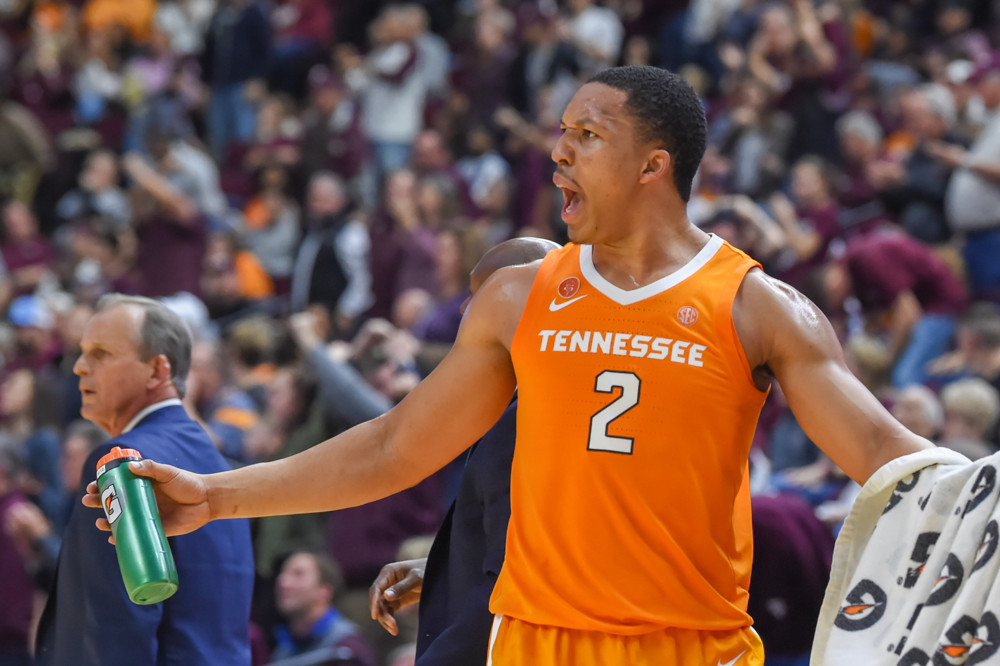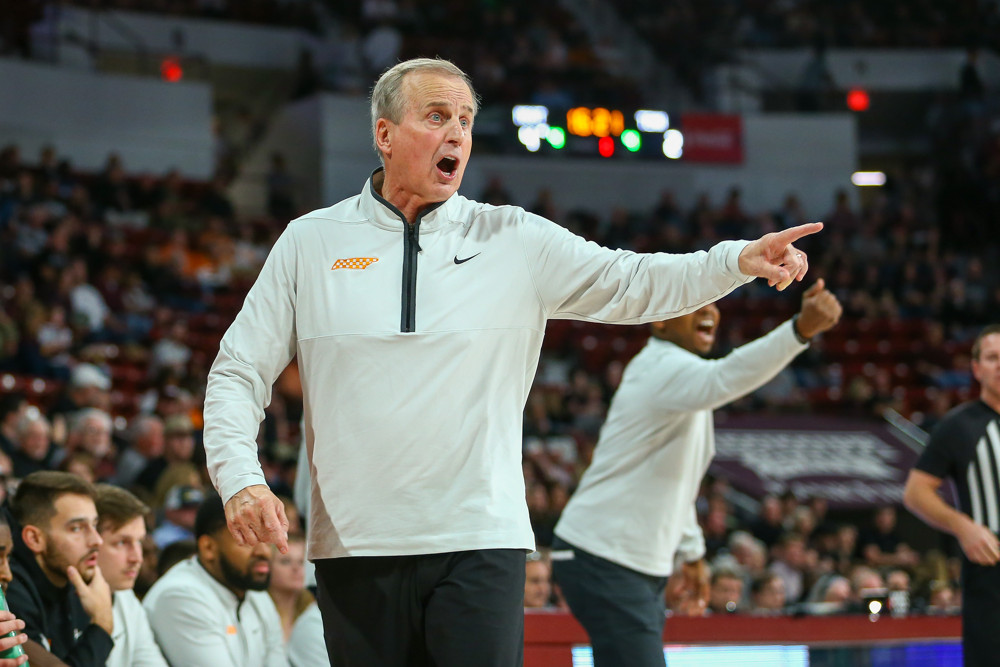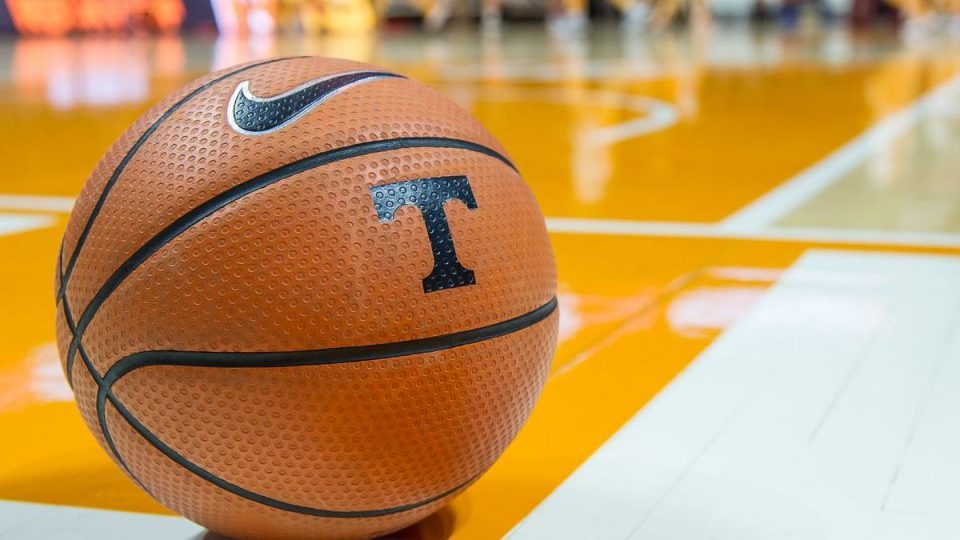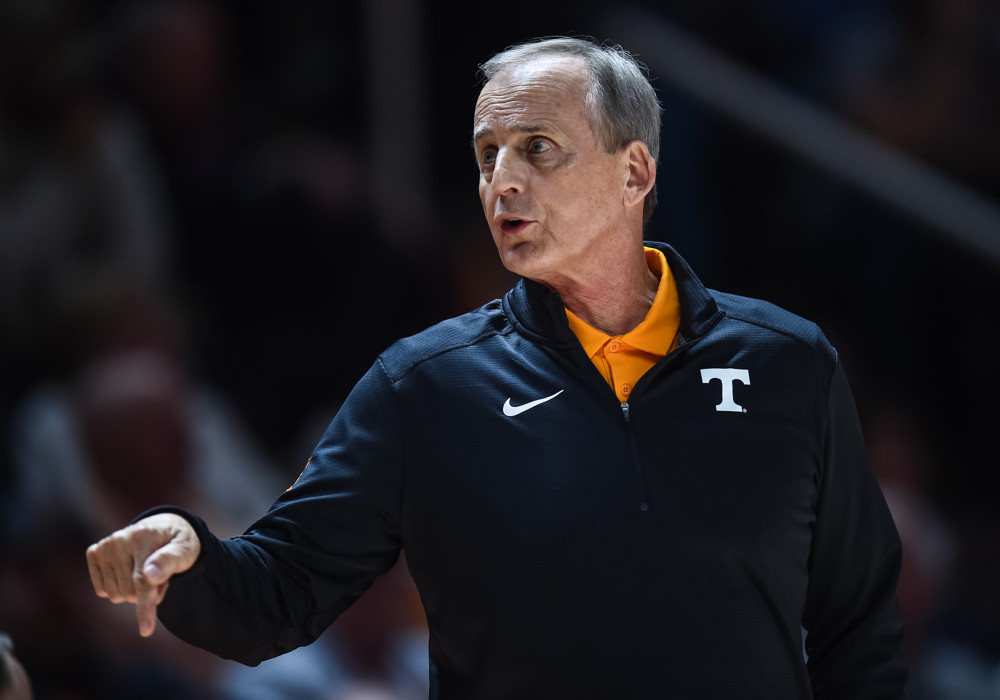Hello there. It’s been a while since I’ve done this, so I hope I’m not too rusty.
It’s been a little over two and a half years since I’ve written an article about Tennessee athletics. For those of you who know me, welcome back! I don’t think this will be a regular thing, but I’m grateful for Will Shelton and the Gameday on Rocky Top crew for allowing me the space to write as I please about the Vols. For those of you who have no idea who I am, prepare yourselves. I have a huge passion for writing, and a huge passion for the Vols, specifically both basketball programs. So most of my writing here will be about them.
For my first article in several years, I wanted to take a look at this season for the men’s basketball team and try to add some historical context to try and ease some of the pain, or at least maybe make some more sense of it. Really, I think writing this is just a form a therapy for me, and you all are just along for the ride. But maybe it will help you out, too.
But enough of the introductions. On to why you clicked here in the first place.
***
This season wasn’t a failure, so why does it kinda feel like one?
In what’s become all-too-commonplace for Tennessee’s men’s basketball program, the Vols were bounced before they could reach the Elite Eight last week when they lost 62-55 to FAU.
If you’ve been following Tennessee basketball for more than a decade, this loss may seem like a familiar one to you, though.
This season is just another instance of deja vu for a program that has one Elite Eight to its name. For some reason, though, it feels like I’ve seen a lot more negative reaction to this year’s loss in the NCAA Tournament than I personally think it deserves.
And a lot of that vitriol is aimed squarely at Rick Barnes.
I think it’s fair to criticize Barnes. I’m not a fan of how often he plays two big men on the floor at the same time who aren’t threats to shoot from distance, and I wish he would push pace more with his offenses. I love the tenacity with which his teams play defense, but I desperately want that same aggression to carry over on the offensive side of the ball. Too often, I don’t think Barnes’ offenses attack the rim enough and instead settle for threes or midrange jumpers. The two teams I can think of that did drive to the basket more and were more aggressive were the Grant and Admiral teams from 2017-19, and one of those got dealt bad injury luck in the 2018 NCAA Tournament, and the other was put in arguably the toughest bracket of the entire 2019 tournament.
Barnes deserves critiques. But I think a lot of it has gone too far, and I think a lot of fans either aren’t aware of or have forgotten just how bad the Vols have been in postseason play historically.
Did you know Rick Barnes is only the second head coach in program history to take the Vols to multiple Sweet Sixteens? The only other coach to do so at UT is Bruce Pearl. In fact, Barnes’ 6-5 record in the NCAA Tournament is the second-best record among coaches who made more than one NCAA Tournament at Tennessee (Cuonzo Martin went 3-1 in the NCAA Tournament thanks to that unlikely 2014 run, but that was his only trip in three seasons). He has the second-most NCAA Tournament wins of any Vol head coach, trailing only Bruce Pearl’s eight wins.
Oh, and he also has the program’s only SEC Tournament championship in the last 40 years.
In my opinion, Ray Mears is still the best overall head coach Tennessee’s men’s basketball program has ever had. But the man struggled mightily in the NCAA Tournament. Granted, making the Big Dance was a lot harder back then with a smaller field of teams that got selected, but from 1962-77, Mears led the Vols to just three NCAA Tournament appearances and lost every game he coached in that tournament. He did lead UT to a third-place finish in the NIT in 1969, and the NIT was a bigger deal back then than it is now. But still.
Don DeVoe went 5-6 in the NCAA Tournament with one Sweet Sixteen appearance (which was in 1981, and the Vols received a bye from the first round and only began play in the Round of 32). Jerry Green went 3-4 in the tournament and made it to one Sweet Sixteen.
And that was it before Bruce Pearl took over in 2005. Three head coaches had combined for an 8-14 mark in the NCAA Tournament before the 2005-06 season, and a host of UT head coaches had failed to ever even sniff the NCAA Tournament in that stretch as well. Cliff Wettig (one season between Mears and DeVoe), Wade Houston, Kevin O’Neill, and Buzz Peterson never made it to the NCAA Tournament in their combined 13 years as head coach. In fact, the Vols missed the tournament altogether from 1990-98. That’s almost an entire decade of irrelevance in a sport that’s judged so heavily by postseason results.
Then, Pearl came along and raised the standard. And that’s a good thing. Tennessee as a program should be able to compete for a Sweet Sixteen run year-in and year-out. But I think that Pearl run has maybe skewed expectations for a large group of fans who don’t remember the dark days of UT basketball, which was pretty much the entirety of the late 80s through the early 00s.
A large portion of those fans are ones in my generation, the Millennials. I grew up watching a lot of Tennessee football, but I didn’t really get into UT basketball till the tail end of the Buzzball era, and Pearl entranced me with his showmanship and winning ways.
I think a lot of fans who are now in their 30s (like me) or 40s were in a similar boat back then, and I think it’s mostly this group and fans who are even younger than that who have the most disdain for Barnes’ failures in the postseason.
But when you step back and look at the history of Tennessee’s men’s basketball program, it can seriously be argued that Barnes is the second-most successful postseason coach behind only Pearl. And he’s a controversial foul call away from matching Pearl on the number of Elite Eights with that 2018-19 team.
To me, that says more about Tennessee as a whole than it does Barnes, but that’s precisely my point. Tennessee has just been downright bad in March up until the last 18 years or so.
It’s absolutely fine to want more and better for Tennessee basketball. I certainly do, and I’m not satisfied with just two Sweet Sixteens in the last five years. The Vols could’ve made it that far or further in 2018 and 2022, and one of those Sweet Sixteens could easily have turned into an Elite Eight or Final Four appearance.
But it’s also good to keep perspective, and I think the sting of this most recent loss to FAU will fade with a little time. Especially when you remember the Vols were playing without the heartbeat of their team, Zakai Zeigler, and weren’t at all expected to even make it that far because of that and how the team had been playing to end the regular season and SEC Tournament.
Tennessee used 10 different starting lineups this season and had a full healthy roster for maybe nine of their 36 total games. Two players played the entirety of the 2022-23 campaign: Olivier Nkamhoua and Jahmai Mashack. One of those players was coming off a season-ending injury last year, and the other was largely a role player until later in the season.
Santiago Vescovi missed a handful of games and had a nagging shoulder for parts of the season, Josiah-Jordan James missed a dozen games, Julian Phillips missed four games, and Tyreke Key had to sit out for a handful of games as well. Then Zakai Zeigler suffered his season-ending injury in the second-to-last game of the regular season and missed the final six games of the year.
By all accounts, this team had no business making it to the second weekend of the NCAA Tournament, especially considering they had a historical power standing in their way in the second round.
Yet, they did.
The Vols had some fun and impressive wins this past season, most notably against No. 1 Alabama, then-reigning national champion Kansas, a dominating win over Texas, and a win over Duke in the NCAA Tournament. They also had several disappointing performances in losses to Colorado, Vanderbilt, Florida, and two losses apiece to Kentucky and Missouri.
Ultimately, the season ended in disappointment. But I think a lot of people are holding that too strongly against Barnes when March Madness is such an insane crap shoot, and it’s a miracle any coach has consistent and sustained success in the NCAA Tournament, in my opinion.
Look at Nate Oats, for example. He had the No. 1 overall seed this season and lost in the Sweet 16, the same round his Alabama squad lost in during the 2021 tournament. That team also won the SEC regular season and conference titles like this year’s Alabama squad, yet neither could make it beyond the Sweet Sixteen. Aside from that, Oats has a first-round exit in 2022 while at Alabama and took Buffalo to the NCAA Tournament three times in four years but failed to make it to the Sweet Sixteen while there.
Tony Bennett at Virginia won the national title in 2019 but has two of the most inexplicable losses in the NCAA Tournament on his resume, including the first-ever 1-seed to lose to a 16-seed. In fact, other than that national championship, Bennett hasn’t won an NCAA Tournament game since 2017. Virginia has been bounced in the first round in 2018, 2021, and 2023, and they failed to even make the tournament in 2022.
And how about ol’ Bruce Pearl? He made that blistering Final Four run with Auburn in 2019, but he’s failed to get past the second round the three other times he’s taken the Tigers to the NCAA Tournament.
It’s good to want more for the Vols. It’s good to not be satisfied with what the ceiling is perceived to be right now. It’s good to have higher expectations than what history has shown, especially when the head coach’s price tag puts him among the elite of college basketball.
At the same time, it’s good to also keep some perspective and put things into context. The Vols are in good shape under Barnes, and his shortcomings in the postseason at Tennessee aren’t just exclusive to him. He’s just the latest in what has become a painfully long list of UT head coaches who have failed to find that magic in March that so many other programs have discovered.
There’s a reason Tennessee has the fourth-most NCAA Tournament appearances in men’s basketball without ever making a Final Four (25). Only BYU (30), Missouri (29), and Xavier (29) have more. Tennessee has been woefully unlucky and outplayed in March throughout the last 40 or so years. That started well before Barnes took over in 2015.
Luckily, the Vols actually seem to have found some rare stability under Barnes. He just finished his 8th season at the helm, which already ties him with John Mauer for the 5th-longest tenure in Tennessee men’s basketball history. Another three seasons, and Barnes will have been in Knoxville as long as Don DeVoe was.
Tennessee can do better in the postseason. They’ve knocked on the door so many times. One day they’ll finally bust it down.
But for a program littered with so many March failures, it seems a little unfair to place so much blame on Rick Barnes’ shoulders. He isn’t perfect, but he has Tennessee consistently among the top-15 programs year-in and year-out, and winning in March is like winning the lottery; the more chances you get, the better your odds of winning big.
One day, the Vols are going to finally make the Final Four. Maybe it will be under Barnes, and maybe it won’t. Until then, we just have to hope the Vols can keep giving themselves the chances to get there.
